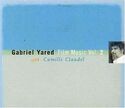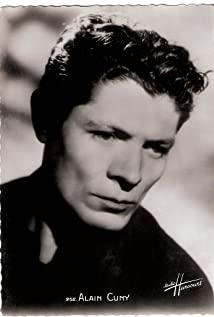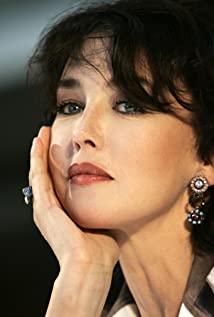She is a girl, an old woman, and a man; a muse, a dead lover, and an old shadow in the illusion. "I gave him all my rough personality, and he gave me my emptiness in exchange. In this way, there are three mes, the Holy Trinity, the Void Trinity." In the studio full of ruins, she said As he said to himself, his eyes were hollow like the ashes of a candle burning.
"I hope I never met you..." she said to him. That was the last time they met like lovers, hugging tightly, and then a fierce quarrel quickly ended it all. He accuses her of plagiarism and plagiarism. He accuses her of only knowing the pain, even the pain of creation, and pretending to be a victim. He even accused her of trying to destroy his reputation and scandal. He pointed to her three sculptures completed with hard work. . They lashed out at each other, saying, "So you finally became my strongest enemy." He said. He turned and left. "What can I say to you, people made a mistake, that's it, I have nothing to say." He could no longer calmly understand her thoughts and hopes, he was tired of dealing with such complicated emotional entanglements. he is gone. She grabbed her heart and wept, blamed, and hit the wall with her head, but she couldn't save what she had lost.
She was torn apart, she was loved, kissed, and the hands that touched her heart were torn apart.
"They cut off my hands and I will give you the stump. I will walk towards you, walk towards you on my bones."
Rodin's lover, people knew her like this. As if she was always covered in that huge shadow. But she has her own light. She is a lush star in the morning mist. She has radiated the most brilliant brilliance. She should have been shining in the night sky of sculpture art for a long time, juxtaposed with the reputation of the greatest people. Later, she fell, and her fiery emotion instantly burned herself to death. She no longer creates or shines. In the last thirty years, she was imprisoned in the silent asylum of Montvergue until she passed away. She is a gray shadow, the ghost of Francesca in Purgatory, and the suffering Sagon Daro.
Her name is Camille Claudel, her name is as rich as a rose. She is an independent sculptor, and in the second half of her life, she has been working hard to earn back an independent soul. She failed to do it. She was Rodin's muse, she was Rodin's lover, and she finally became Rodin's most determined and desperate enemy. No one hates that great artist so painfully and ambivalently like her. She helped him with her love and destroyed herself with hate.
When they met in 1882, the light tails of two comets dragged across Paris, converging dizzyingly. At that time, he was 41 years old and was already world-famous, and she was still a 17-year-old girl who was obsessed with mud and stone, Ufa, with a pair of lake-blue eyes, as beautiful as stars in the morning. She was introduced to Rodin as his student, and her genius quickly attracted the attention of the master, shocked, and recognized. He said that she no longer needs a teacher at all, and she can learn by doing. The portrait of Rodin she carved made him amazed. Their very similar creative ideas and common passion in sculpture art made them come together quickly and fell into love and intense happiness. This relationship illuminates Rodin's life like a candle and brings him a new meaning. He loves to say that she is the only source of inspiration for him, and what she has is what he has lost. The collision of geniuses is so lucky, but so unfortunate for the other party. In a sense, their love created Rodin, or at least promoted Rodin. It was during the period when they fell in love and worked together that Rodin’s works changed significantly, and he regained him, who was almost exhausted. Power began to appear "delicate body and sensitive sensibility", and created a series of fascinating masterpieces such as "Eternal Youth", "Thinking", "Dana Yide", "Kiss", etc. Camille's ideas and handwriting are also incorporated into works such as "Balzac" and "Hell's Gate". However, for Camille, the result was an unexpected and unimaginable disaster, and their love turned out to be a sword that severed his artistic life.
Before that, Rodin had already had a lover, Mary Rose, who had lived together for many years, and their children. He had not married Mary, nor had he married Camille. Even she was pregnant with his baby. The horrified and jealous Mary rushed into Camille's studio to question and almost hurt her. Camille concealed the truth and bore the bitter punishment alone. She is proud, so proud that she disdains to beg for help. She was caught under tremendous social pressure, caught in the shadow of her lover and her lover's mistress, she finally couldn't stand it all. She is so proud and self-esteem that she demanded equality from the beginning. "I can't share you with others, that would be a struggle for me." The detached spirit and the love in the heart crashed into the dust of the world.
In Camille’s sculpture, there is a unique and beautiful head of a child. With such soft and serene lines and such a pure expression, it was the child she had conceived in her womb, and she would never have another child of her own. Wife, mother, in front of the two most loving roles in a woman's life, she couldn't step over, and her footsteps came to a halt.
After falling in love for ten years, they broke up. The biographer wrote, “She did not simply betray or deny Rodin, but pursued deeper and more refined art forms, but when she worked hard to create more refined masterpieces, Rodin, her teacher, rejected her. , Forcing her to break up with him. For Camille, it was like a stratum burst, huge cracks swallowing her creative source." Before that, the gap between them had grown bigger and bigger, and Camille was dissatisfied with Rodin. In order to link the status of a master to the political world, she is dissatisfied with Rodin's works becoming more and more commercialized. Perhaps she is dissatisfied with the fact that she is getting further and further away from the person she loves deeply. The spiritual idol she has established is in her heart. Gradually collapsed, she was horrified and suspicious, and even no longer agreed with herself. After breaking up, she lived alone in Paris and continued to sculpt, creating works such as "Mature Age", "The Wave", "Beh and Gognat", "Niobid", but she has already appeared in spirit. A serious crisis. Her creation has also been questioned and criticized by the society. She blamed Rodin for all this, and he became the enemy of her persecution in her fantasy. In the middle of the night, she rushed to his door and smashed his window with a stone. The door was full of rubbish. She yelled and cursed him angrily, while he sat in the house without saying a word. Her true self-confidence was no longer revealed in the salon exhibition held by her brother Paul. The thick foundation and rouge pressed against the face of the once beautiful girl, and that moment was heartbreaking. She behaved badly and talked exaggeratedly in front of the gathered guests, like an unworldly village woman. Paul watched this embarrassing scene, knowing that he had lost his beloved Camille forever. A few years later, the famous writer said at his sister's grave, "Camille, what is your precious gift to me? It's just this empty place under my feet? Nothingness, nothingness!"
She discarded the first sculpture made for Rodin, a marble foot signed by him; in the middle of the night when the rain was raging, she curled up in the dark corner of the road, staring at Rodin's figure walking by, staring at him and The lover helped into their home. everything is over. One night in 1905, she lifted a heavy hammer to smash pieces of work that had been cast over many years of hard work. Then, she dropped the hammer and the carving knife, dropped her clay, stone, and bronze, and dropped her soul. In March 1913, a week after his father's death, the 48-year-old Camille was formally admitted to a mental hospital. That day, Rodin, whom she loves and hates infinitely, suffered a stroke and was paralyzed. Their fate ends at a certain point in a suffocating entanglement.
<2005.09.25>
View more about Camille Claudel reviews











